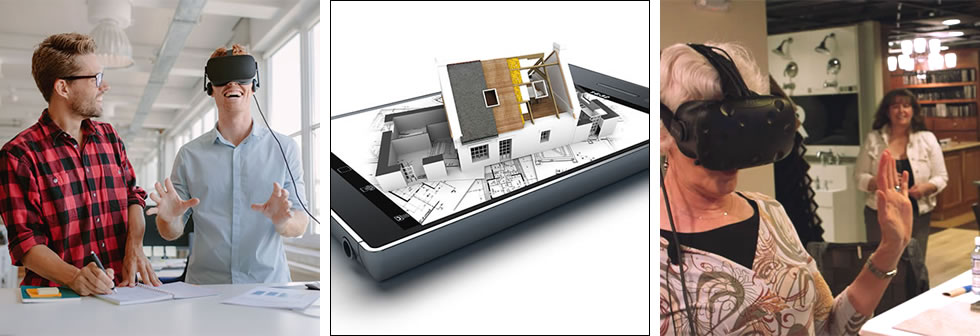
You’ve seen the Oculus headset and maybe even the cardboard Google glasses used to play around with virtual reality, but did you know virtual reality is increasingly important to homebuyers and builders? While the old-fashioned way of looking at homes, tramping from model home to model home or visiting numerous properties listed for sale, still has its merits, buyers are increasingly willing to preview and even buy homes sight unseen.
In fact, a May 2017 survey by Redfin real estate brokerage found that one-third of homebuyers purchased a home without seeing it in person, a big jump from the 19 percent of buyers who did so in 2016. Buyers are predicted to become more and more comfortable with purchasing a home without physically visiting it. Redfin’s survey found that 41 percent of millennials in the survey said they would be likely to make an offer on a house even if they hadn’t seen it in person.
Virtual reality, which provides three-dimensional images of things that don’t actually exist, like a video game, can be a way to experience a house before its built. Real estate agents and builders are using virtual reality and its cousin, augmented reality, to showcase homes and options. Augmented reality uses photos of real rooms and homes and offers the option of superimposing images to test out finishes, fixtures and furniture.
High-end condos offer virtual reality experience
While only a small number of builders use virtual reality so far for buyers, increased use of the technology is anticipated as more consumers embrace it. Industry insiders think the primary use for virtual reality will be as an adjunct to a model home. For example, a builder may opt to build just one model home in an area and then offer virtual reality versions of additional models. That way consumers can see and touch at least one home to get a feel for the quality of the building while also being able to “walk-through” alternative floor plans via virtual reality.
The first developers to jump into virtual reality have been builders of expensive condos in New York City, Miami and Washington, D.C. Condos typically need to sell a certain percentage of units before the building is complete. A virtual reality tour of a unit and building amenities can entice buyers even before a model unit is available. In the past, buyers only had floor plans and renderings to view. Many people have difficulty picturing the space of rooms from a floor plan. Virtual reality lets viewers feel as if they are walking through a home or a community and get a better sense of the dimensions of the rooms and the layout of the home.
Builders are beginning to use virtual reality to plan homes, too. Pulte Homes, for example, is using virtual reality and iPads with focus groups to get feedback on their home designs rather than building sample models for research groups.
Using virtual reality to choose options
Another use for virtual reality anticipated to be used more frequently in the future is for buyers to choose their optional features. Toll Brothers recently announced a pilot program called Kitchen 360 that allows buyers to create millions of combinations when designing their kitchen. Buyers can start by personalizing features within their floor plan on a tablet and then put on an HT Vive headset to walk through their kitchen to see what their choices look like, including appliances, cabinets, finishes, flooring, counter tops and paint colors.
While your first experience with virtual reality may feel like a video game, using this technology can help you choose or design the home of your dreams.
